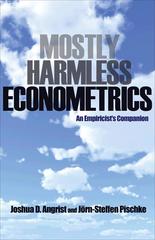Question
1. If Y t = c o + c 1 X t + c 2 Z t + e t , t = 1, 2,
1. If Yt = co + c1 Xt + c2Zt + et , t = 1, 2, . . . , T
Xt and zero mean et are stochastically independent, and et = et-1 + ut
where 0, ut is mean zero i.i.d., then GLS can be performed using
a. generalizing the covariance matrix of ut and then applying OLS.
b. repeated OLS
c. estimating r and transforming Yt , Xt , Zt using this estimates
d. estimating ut and transforming Yt , Xt , Zt using this estimates
2.
If Yt = co + c1 Xt + c2Zt + et , t = 1, 2, . . . , T
Xt and zero mean et are stochastically independent, and et = et-1 + ut .
To test Ho: = 0 in above, Durbin-Watson d-statistic gives 2.65, and at 5% significance level, T = 90, k = 3, how do you conclude?
a. Accept Ho
b. Reject Ho , accept negative autocorrelation
c. Reject Ho , accept positive autocorrelation.
d. Inconclusive on Ho
3.
Suppose Yt = co + c1 Xt + c2Zt + et , t = 1, 2, . . . , T and et satisfies the classical conditions. However, in a regression, Zt was omitted. If Zt = r Zt-1 + ut
where r 0, and ut is i.i.d., the D-W d-statistic in the above is likely to be
a. different from 2
b. close to 2
c. close to 0
d. cannot be computed.
Step by Step Solution
There are 3 Steps involved in it
Step: 1

Get Instant Access to Expert-Tailored Solutions
See step-by-step solutions with expert insights and AI powered tools for academic success
Step: 2

Step: 3

Ace Your Homework with AI
Get the answers you need in no time with our AI-driven, step-by-step assistance
Get Started


